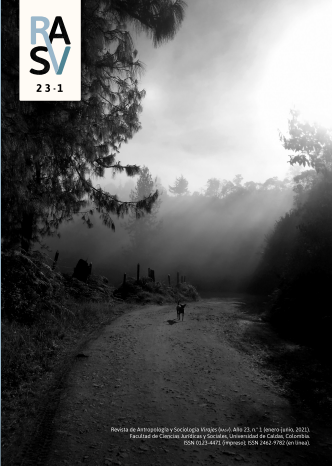Authors
Abstract
This article sets out to analyze how concrete is implicated in the transformation of public space in provincial Peru. While concrete enhances a state’s capacity to produce reliable, predictable structures, there are also significant limits in relation to its connective capacity in both the material and social domains. Ethnographic attention to the relational dynamics of concrete reveals how its promise to operate as a generic, homogeneous, and above all predictable material is constantly challenged by the instability and heterogeneity of the terrains to
which it is applied. The image of power that concrete affords is thus a compromised one, as the stability and predictability of this substance is secure only insofar as it is surrounded by and embedded in specific relationships of care.
References
Bensaude-Vincent, B. y Stengers, I. (1996). A History of Chemistry (Trad. D. van Dam). Cambridge, MA: Harvard University Press.
Cohen, J. y Moeller, M. (eds.). (2006). Liquid Stone: New Architecture in Concrete. New York: Princeton Architectural Press.
Coke, J. (1999). President’s Memo: South America Visit, American Concrete Industry, 24 de febrero de 2009. Recuperado de http://www.concrete.org/about/ab_presmemo_coke11.htm.
Colloredo-Mansfeld, R. (1994). Architectural Conspicuous Consumption and Economic Change in the Andes. American Anthropologist, 96(4), 845-865.
Dumez, H. y Jeunemaître, A. (1998). The Unlikely Encounter between Economics and a Market: The Case of the Cement Industry. En M. Callon (ed.), The Laws of the Markets (pp. 222-243). Oxford: Basic Blackwell
Gandy, M. (2002). Concrete and Clay: Reworking Nature in New York City. Cambridge, MA: MIT Press.
Gose, P. (1994). Deathly Waters and Hungry Mountains: Agrarian Ritual and Class Formation in an Andean Town. Toronto: University of Toronto Press.
Gurmendi, A. (2001). The Mineral Industry of Peru. US Geological Survey Minerals Yearbook, 24 de febrero de 2009. Recuperado de http://minerals.usgs.gov/minerals/pubs/country/2001/pemyb01.pdf.
Harvey, P. (1997). Peruvian Independence Day: Ritual, Memory, and the Erasure of Narrative. En R. Howard-Malverde (ed.), Creating Context in Andean Cultures (pp. 21-44). Oxford:
Oxford University Press.
Harvey, P. y Knox, H. (2009). Abstraction, Materiality and the ‘Science of the Concrete’ in Engineering Practice. En T. Bennett y P. Joyce (eds.), Material Powers: Cultural Studies, History and the Material Turn (pp. 124–141). London: Routledge.
Jones, P. (2006). Ove Arup: Masterbuilder of the Twentieth Century. New Haven, CT: Yale University Press.
Mukerji, C. (2006). Tacit Knowledge and Classical Technique in Seventeenth-Century France: Hydraulic Cement as Living Practice among Masons and Military Engineers. Technology and Culture, 47(4), 713-733.
Orlove, B. (1998). Down to Earth: Race and Substance in the Andes. Bulletin of Latin American Research, 17(2), 207-222.
Tafunell, X. (2007). On the Origins of ISI: The Latin American Cement Industry, 1900– 30. Journal of Latin American Studies, (39), 299-328.
Taussig, M. ([2004]2013). Mi museo de la cocaína (Gnecco, C., Trad.). Popayán, Cauca: Universidad del Cauca.
Tsing, A. (2005). Friction: An Ethnography of Global Connection. Princeton, NJ: Princeton University Press.
Wagenaar, C. y Dings, M. (eds). (2005). Ideals in Concrete: Exploring Central and Eastern Europe. Rotterdam: NAi Publishers.

 pdf (Español (España))
pdf (Español (España))
 FLIP
FLIP



















